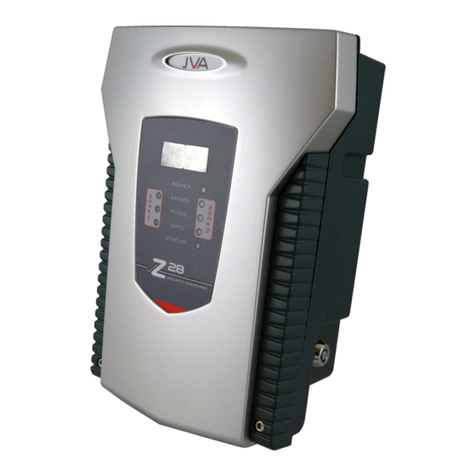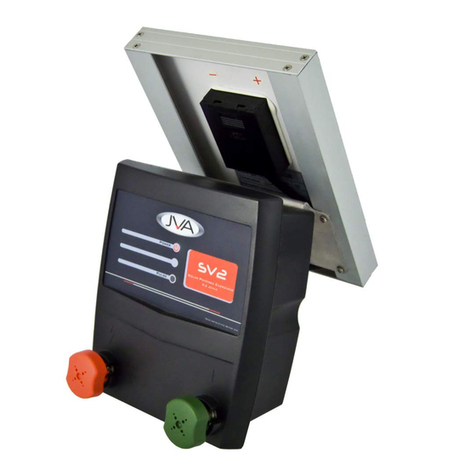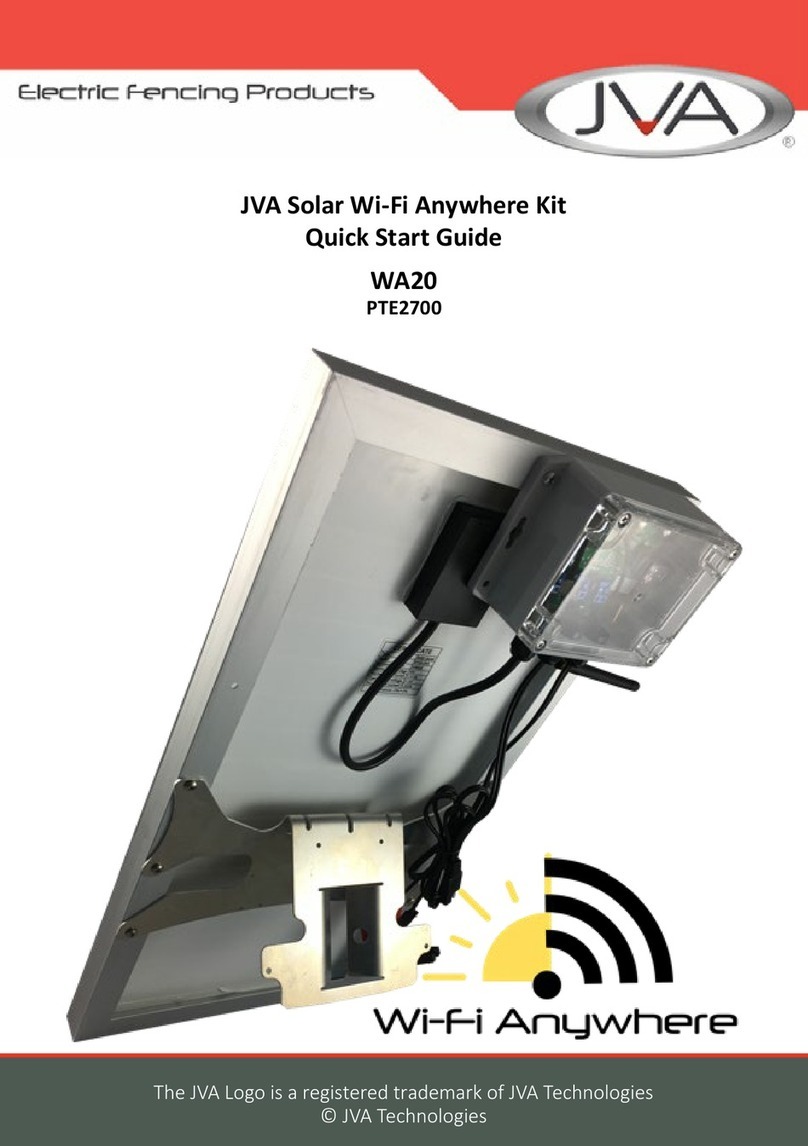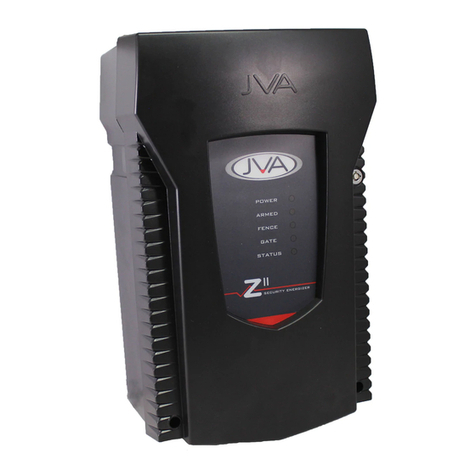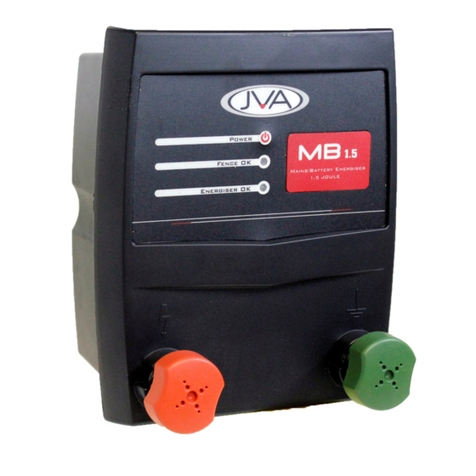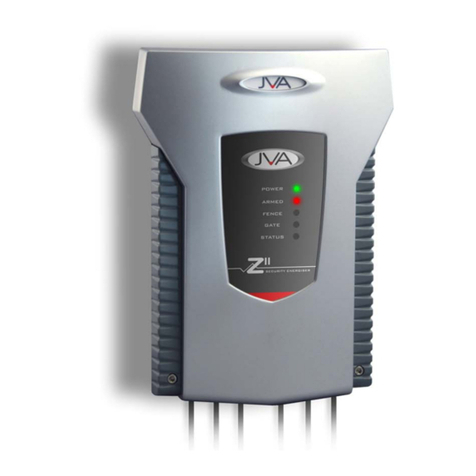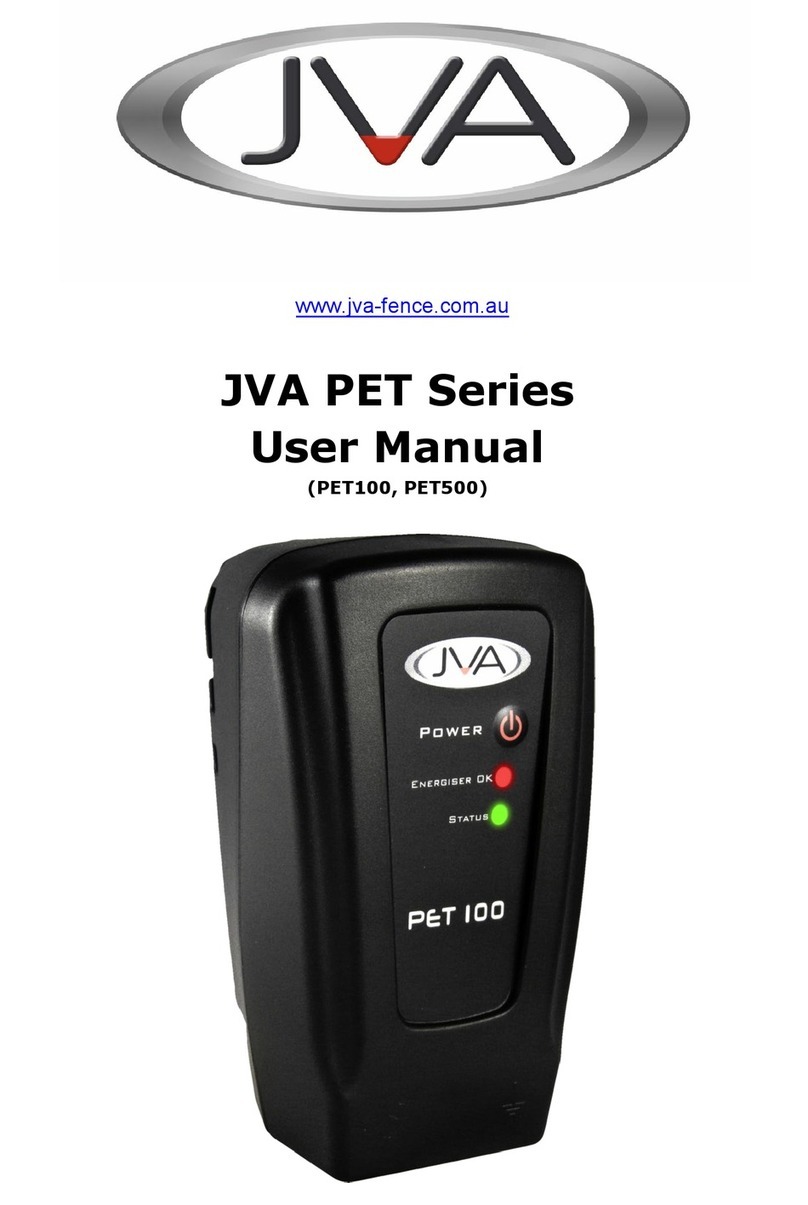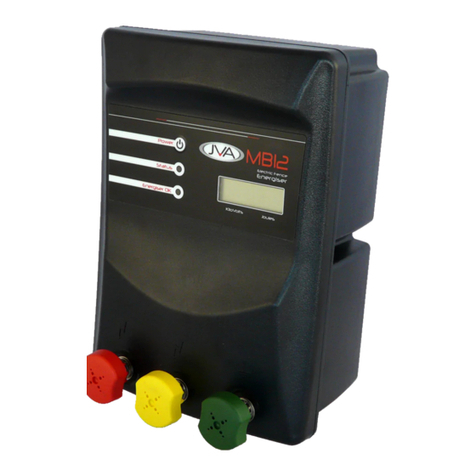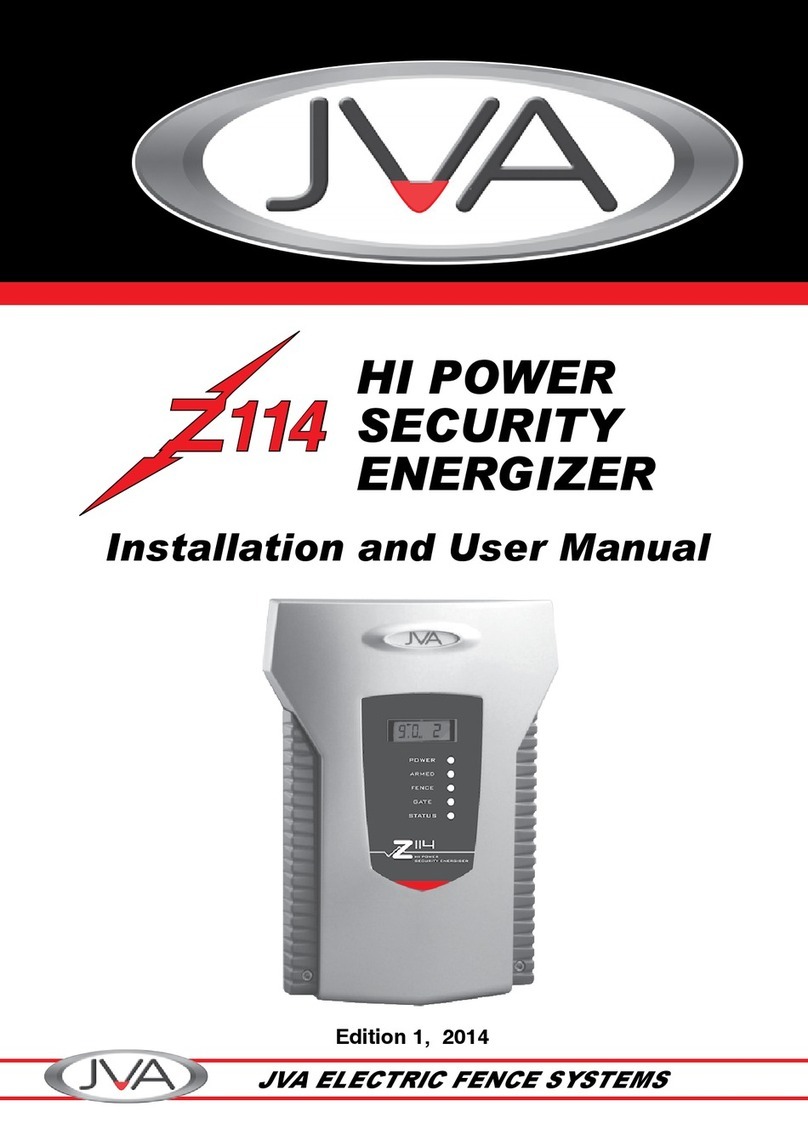
MB1.5, MB3.0, MB4.5
1
JVA AgriRange Energizers
1. IMPORTANT NOTES – PLEASE READ
1.1 Electric Fences
1. Electric fences must be installed only in accordance with the relevant Standards and
Workplace Health and Safety regulations.
2. Electric fences are designed to deliver a short, safe shock. Do not let children play near them.
3. Electric fences must have warning signs. These must comply with IEC standards and should
be prominently displayed on electric fences at distances specied by the country in which
they are installed.
4. In order to operate eectively, electric fences must be well earthed. This involves the use of
galvanized, *steel stakes/spikes/rods/electrodes (various terms are in use) driven into the
earth at a depth of at least 1.2m. A minimum of 3 earth stakes are recommended at the
energizer. Additional earth stakes may be required on higher powered energizers and along
the fence in dry soil conditions. The deeper the earth stakes, the better.
* Hot-dipped galvanized steel earth stakes are recommended because the eectiveness
of the earthing is reduced by corrosion at the joints. This is caused by the electrolytic
eect resulting from a current owing through unlike metals making contact in a moist
environment.
1.2 Energizers
1. The energizer places a very short, safe, high voltage pulse on the fence live wires approximately
once every second. Please be advised that there is always a risk associated with any device
designed to impart an electric shock. Do not allow children or elderly persons to touch the
energizer or fence live wires.
2 The maximum length of fence able to be energized depends on many factors, for example the
earth resistance, competition from vegetation, number, spacing and conguration of wires –
series or parallel, type/quality of insulators, resistance of wire type used, etc. Another factor to
consider is acceptable fence voltage: for some livestock situations this is 3kV, others require
more or less. Therefore the rated mileage of fence that the energizer will power eectively is
a guide only.
3. WARNING! The energizer should never be operated with the cover removed as high voltages
exist inside the enclosure while operating. High voltage may remain on some internal parts
long after the unit has been switched o.
1.3 Power Supply Options
• 12V Battery (not supplied)
• 24V Battery (not supplied)
• 12V Battery with Solar panel (not supplied)
• 240Vac (via Power Pack) (13.8V DC Power Pack supplied)
The JVA MB1.5, MB3 and MB4.5 energizers have limited power supply options. For more
information please refer to section 2.2.







